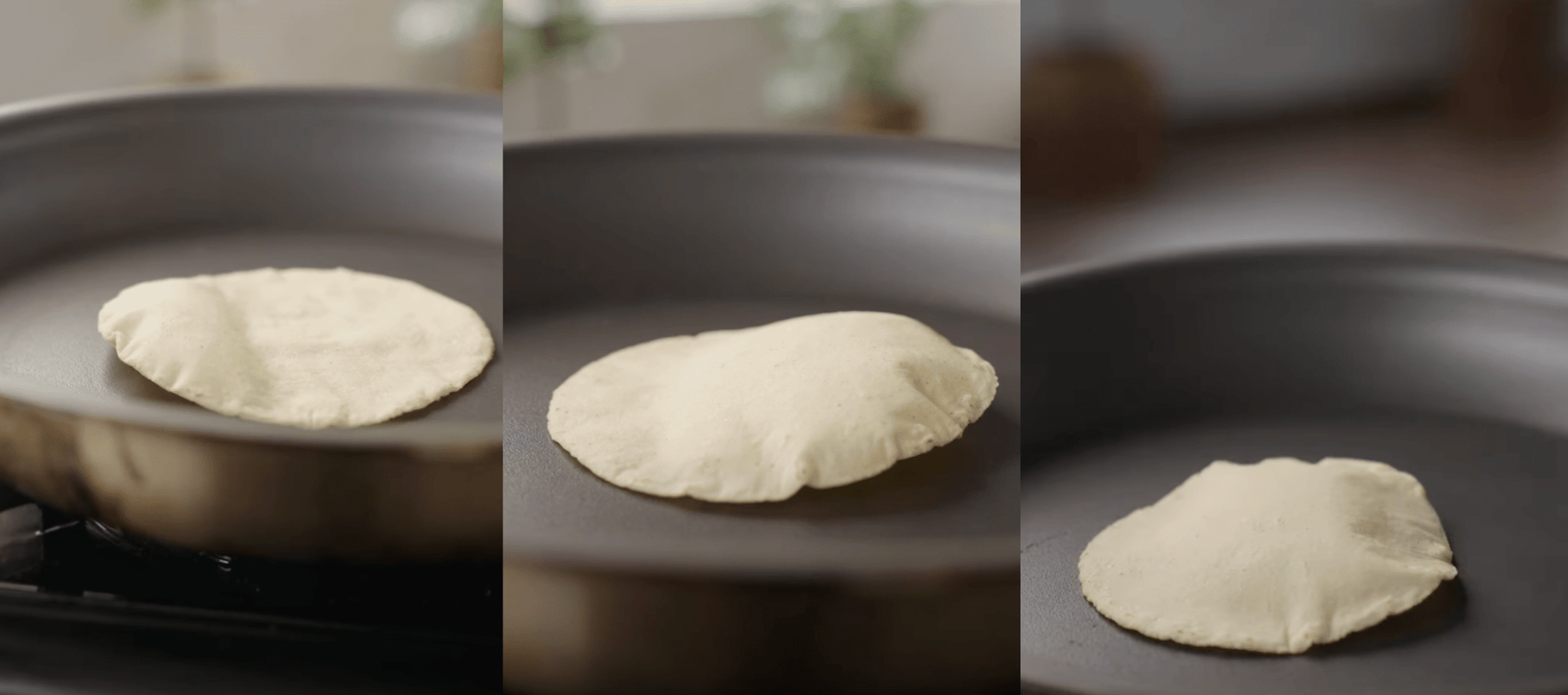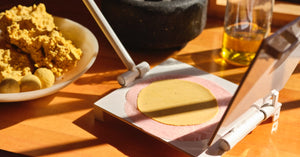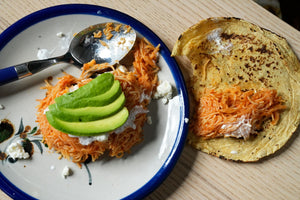How to Get Your Tortillas to Puff Every Time
How to Get Your Tortillas to Puff Every Time

August 9, 2023
People are always asking us about how to achieve the tortilla puff (also known as the pancita) with our bestselling masa harina, which is the result of trapped moisture at the tortilla’s core expanding outward in the form of steam. It’s one part technique, one part practice, and one part magic.
But we’ll try to break it down in the tips below.
Note: While achieving a puff is a good indicator that your tortilla is properly cooked, a puff-less tortilla can be just as scrumptious.
 Shop Heirloom Corn Masa Harina
Shop Heirloom Corn Masa Harina
1. It’s all about moisture.
Your masa should be moist but shouldn’t stick to your hands; think fresh Play-Doh.
So you'll want to mix your masa well. Aim for a dough that’s well-kneaded — three minutes or so will do. This helps ensure even absorption.
Let it rest. Allowing your masa to sit out for 30 minutes or so will also give you a boost in terms of hydration. Just be sure to cover it so that it doesn’t dry out.
Try the Smush Test. If you think your masa is still thirsty, try rolling a small ball and smushing down with a finger. If the edges crack, it needs more water. If the edges are smooth, press and cook away.
And if you’re working with lots of masa, we recommend having a spray bottle on hand. Give your tortilla a spritz once it’s on the comal/griddle for an extra kiss of hydration.
2. Compression, compression, compression.
For a symmetrical puff, we recommend pressing once, then rotating 180 degrees (or flipping over) for a second press, to help ensure that one side doesn’t inflate while the other droops.
You don’t want a tortilla that’s too thick — the steam won’t rise under the weight of too much masa! A very thin tortilla will also be susceptible to tearing, which will sabotage your chance at a puff. So aim for that sweet spot in the middle.
Getting a partial puff? Grab a damp paper towel or dishcloth and gently press around the perimeter. This will push some of the steam to the middle, increasing your puff probability.
3. Hot hot heat.
Your comal needs to be pre-heated, and hot. We recommend medium high to high on most stoves to get to between 400 and 500 degrees Fahrenheit. (The wood-fired clay comales found throughout Oaxaca average about 650 F, for example.) We’re searing both sides of a tortilla fast enough to trap the moisture in the center.
If you aren’t using a non-stick pan or a well-seasoned comal/griddle, your masa will adhere to your surface rather than releasing and elegantly expanding upwards and outwards.
Don’t forget, flip twice! After you place your tortilla on the comal, you’ll flip it to the reverse side, then flip it back to the original side, and that’s when puff happens! When you tear open your newly puffed tortilla, you should see the top layer of masa separate from the bottom. Think pita bread.
One final piece of advice? Say a prayer. Not religious? Send good juju, then. Or do a dance, sing a song, wish upon a faraway star. There’s a little bit of mystery and magic in the puff process, so leave room for it!
For more tortilla tips, check out our full playlist on YouTube.



All Comments
Hi Virg! We recommend using 1 tsp of salt per 1 cup of masa harina. We don’t use baking powder in our recipe, so that’s totally up to you. Here’s our recipe for perfect tortillas:: https://masienda.com/blogs/learn/recipe-tortillas-masa-harina
How much baking powder to use and salt?do I use hot water
First time using the mask.
Tortillas turned out good with puff or bomba around edges and a little in center.
So much better from store bought.
Thank you
Hi Lisa! We’re sorry to hear you’re having trouble with our masa harina. Could you let us know exactly what issues you experienced with your tortillas—like cracking, being undercooked, dry, or anything else? We’re happy to help!
I followed the directions on a bag I bought this spring that said medium-low heat and they didnt cook well.